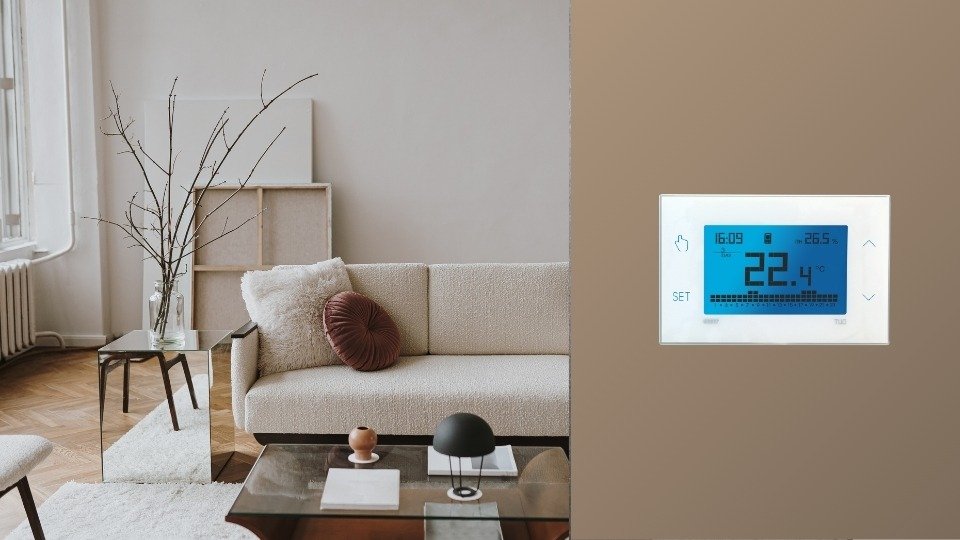Renovating your whole home is exciting but choosing the right colors can feel overwhelming. A well-designed color palette ties every room together, making your space feel balanced and welcoming. But how do you pick colors that flow perfectly from one room to the next without clashing?
In this guide, you’ll learn simple, smart tips to create a cohesive color palette that suits your style and your home’s unique features. Whether you love bold shades or soft neutrals, these steps will help you design a space that feels unified and fresh.
Understanding the Basics of Color Theory
When you’re thinking about how to design a cohesive color palette for your whole home renovation, understanding the basics of color theory is a great place to start. Color theory is the study of how colors work together and influence how we feel in a space.
If you’re planning a home renovation Brooklyn NY homeowners will love, knowing a bit about color theory can help you choose shades that create the perfect look and feel throughout your home.
What Is Color Theory?
Color theory explains the relationships between different colors. It divides colors into groups like primary, secondary, and neutral colors. Primary colors are red, blue, and yellow — these are the base colors you can’t make by mixing others. Secondary colors are green, orange, and purple, made by mixing primary colors.
Neutral colors include white, black, gray, and browns, and they often act as a background or balance in your color palette.
How Colors Affect Mood and Space
Colors don’t just decorate a room — they can change how it feels. Warm colors like red, orange, and yellow often make a room feel cozy and energetic. Cool colors like blue, green, and purple tend to make spaces feel calm and relaxing. Neutral colors help tie everything together and give your eyes a place to rest.
Why Color Theory Matters for Your Home
By using color theory, you can create a color palette that flows smoothly throughout your whole home. This means when you walk from room to room, the colors won’t clash or feel disconnected. Instead, your home will feel balanced and welcoming, which is exactly what you want from a whole home renovation.
Assessing Your Home’s Existing Features and Lighting
When planning how to design a cohesive color palette for your whole home renovation, it’s important to start by assessing your home’s existing features and lighting. These two factors play a big role in how colors will look and feel in each room. Ignoring them can lead to choosing colors that don’t work well once you start painting.
Why Lighting Matters
Lighting can change the way a color appears in your space. Natural light from windows shows true color during the day, but the direction the light comes from can make a difference. North-facing rooms usually have cooler, softer light, while south-facing rooms get warmer, brighter sunlight. Artificial lighting, like bulbs and fixtures, also affects color.
Warm bulbs can make colors look softer, while cool bulbs can make them feel sharper. Testing paint samples in different lighting at different times of the day helps you see how colors will really look.
Considering Your Home’s Features
Your home already has colors in things like flooring, countertops, and furniture. These existing features set the tone for your new color palette. For example, if you have dark wood floors, lighter wall colors might balance the room. Or if your kitchen counters are a cool gray, warmer wall tones can create contrast.
Take note of permanent features because repainting floors or replacing big furniture is usually not part of a renovation.
How to Test Colors in Your Space
Before choosing your whole home palette, try painting small patches on the walls or use large color swatches. Look at these samples in different rooms and lighting conditions. This simple step prevents surprises later and helps you feel confident about your color choices.
Choosing a Base Color and Building Your Palette
Choosing a base color is one of the most important steps when you design a cohesive color palette for your whole home renovation. The base color sets the overall tone and mood, and it’s the color that will appear most often throughout your space. Picking the right base color helps create a smooth flow from room to room.
Picking Your Main Color
Start by choosing a color you love and feel comfortable with since it will be the foundation of your palette. This base color should work well with your home’s lighting and existing features. Neutral colors like soft grays, warm beiges, or creamy whites are popular because they’re easy to match and create a calm, inviting feel. But if you want something bolder, you can choose muted blues, greens, or even gentle pastels as your base.
Building Around Your Base Color
Once you have your main color, it’s time to pick complementary and accent colors. Complementary colors are those that sit opposite on the color wheel, which can create balance and interest without clashing.
Accent colors are usually brighter or deeper shades used in smaller areas, like throw pillows, artwork, or an accent wall. The key is to keep these colors in harmony with your base so everything feels connected.
Balancing Warm and Cool Tones
When building your palette, think about mixing warm and cool tones to keep your space lively but balanced. For example, if your base color is a cool blue, you might add warm accents like soft yellows or gentle browns. This contrast adds depth and makes rooms feel cozy without overwhelming your eyes.
Tips for Applying Your Color Palette Throughout the Home
Once you’ve designed a cohesive color palette for your whole home renovation, the next step is applying it thoughtfully throughout your space. Using your colors in the right way helps keep your home feeling connected and stylish, without making it look repetitive or boring.
Using Color in Different Rooms
Each room has its own purpose and vibe, so you can adjust your color palette to fit. For example, you might use the base color on the walls in most rooms but choose a stronger accent color in a living room or dining area where you want to create energy.
In bedrooms, softer tones from your palette can make the space feel calm and restful. This way, your colors flow naturally but still suit each room’s mood.
Accent Walls, Trims, and Details
Don’t forget about smaller details when applying your color palette. Accent walls are a great way to add a pop of color without overwhelming the space. You can also use your palette for trim, doors, and moldings to create contrast and highlight architectural features. Accessories like throw pillows, rugs, and curtains are perfect for adding accent colors in a flexible way.
Keeping It Cohesive While Adding Personality
To keep your home feeling cohesive, repeat your base and complementary colors in different rooms but vary the shades and intensity. This helps tie everything together while letting each room have its own personality. Using similar colors in different finishes — like matte, glossy, or textured — can also add visual interest without breaking the flow.
Conclusion
Designing a cohesive color palette for your whole home renovation isn’t just about picking pretty colors — it’s about creating a space that feels connected and comfortable. With these easy steps, your home will look stylish and harmonious, making every room a joy to live in.
READ ALSO: Porcelain Wall Tile and How to Install Porcelain Wall Tile for a Timeless Interior Look











